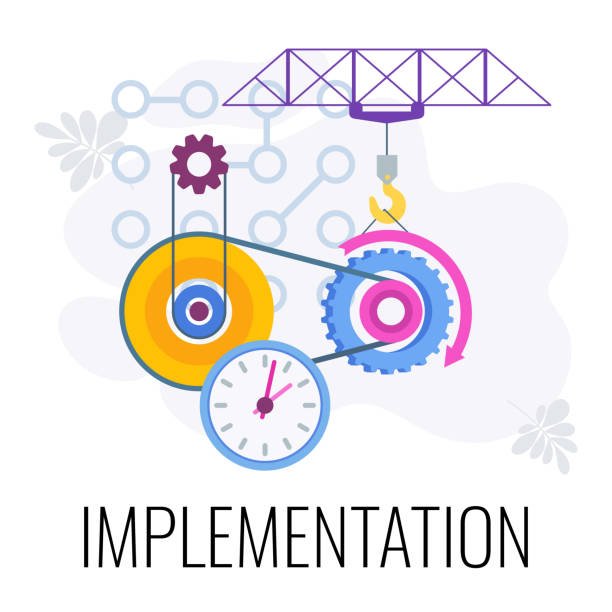Introduction
In an era where digital agility defines competitive advantage, business applications are undergoing a profound transformation. Organizations are no longer seeking isolated software tools but integrated digital ecosystems that enable faster decision-making, operational efficiency, and personalized customer experiences. Microsoft’s global network of elite partners, recognized under the microsoft inner circle partner program, plays a pivotal role in shaping these next-generation application trends. These partners are selected based on their innovation, customer success outcomes, and strategic contributions to the Microsoft Business Applications ecosystem.
Their insights—coming from real-world implementation scenarios across industries—provide a crucial view into how enterprise applications will continue to evolve. This article explores the key trends leading the future of business applications and how organizations can leverage guidance from Inner Circle partners to modernize, scale, and outperform in the digital-first economy.
Understanding the Role of Microsoft Inner Circle Partners
A microsoft inner circle partner is not simply a reseller or implementation vendor. These organizations are strategic transformation leaders trusted by both Microsoft and enterprise clients. They have early access to product roadmaps, collaborate directly with Microsoft engineering teams, and influence future improvements in platforms like Dynamics 365, Azure, and Power Platform.
Such partners excel not only in deploying technology but also in designing future-proof digital architectures—helping organizations transition from legacy workflows to intelligent, automated, and data-driven operations.
Trend 1: Convergence of ERP, CRM, and AI into Unified Intelligent Platforms
One of the most significant trends driven by these partners is the integration of enterprise systems across departments. In traditional business environments, ERP and CRM solutions operate as siloed applications. However, Inner Circle partners are leading the shift toward unified systems that break down departmental barriers.
With Microsoft Dynamics 365 and the Power Platform, organizations can now:
- Automate cross-department workflows
- Access real-time operational and customer data
- Improve forecasting accuracy with embedded AI
- Enhance collaboration through Microsoft Teams integrations
This convergence not only streamlines operations but also increases strategic responsiveness—helping businesses make decisions rooted in real-time intelligence rather than static reports.
Trend 2: AI and Copilot-Driven Workforce Augmentation
Artificial intelligence is no longer a future concept—it is a workforce multiplier. Microsoft Copilot and AI-infused processes are becoming central to business operations, assisting users in:
- Generating reports and documentation instantly
- Identifying patterns in financial or customer data
- Automating repetitive tasks in sales, supply chain, finance, and HR
- Enhancing customer interactions through predictive insights
Microsoft inner circle partner organizations are leading pilot programs where AI tools are embedded directly into business workflows. The focus is shifting from automation alone to human-AI collaboration, where employees make smarter decisions backed by contextual insights.
Trend 3: Industry-Specific Business Solution Accelerators
Generic business applications can no longer address specialized operational requirements. Inner Circle partners are developing industry-specific digital accelerators to address domain complexities. These include:
- Demand forecasting for retail and FMCG
- Patient care systems for healthcare
- Predictive maintenance for manufacturing
- Digital loan workflows for financial services
- Asset tracking and vehicle logistics for transport companies
By configuring Dynamics 365 and Power Platform to industry standards, these partners reduce implementation time and ensure compliance readiness from day one.
Trend 4: Low-Code Application Expansion Through Power Platform
The democratization of development is a foundational change in how software is built across enterprises. With Microsoft Power Platform, business users with minimal coding experience can create workflow apps, automate processes, and build dashboards. This enables:
- Faster digital innovation
- Reduced development backlogs
- Greater ownership by business teams
- More scalable governance frameworks
Inner Circle partners are enabling organizations to build Centers of Excellence (CoE) that formalize governance, training, and security practices, ensuring low-code growth is controlled, secure, and strategically aligned.
Trend 5: Cloud-Native Scalability and Multi-Region Business Continuity
The rise of global digital operations requires applications built on cloud-native, scalable, and resilient architectures. Inner Circle partners are assisting organizations in transitioning to Microsoft Azure, leveraging features like:
- Geo-redundancy
- Zero-trust security frameworks
- Predictive cost optimization
- Automated failover and disaster recovery
This shift ensures that business applications are not only scalable but also resilient and compliant across multi-regional regulations—a critical requirement for global enterprises.
Benefits for Enterprises Working with Microsoft Inner Circle Partners
Organizations working with Inner Circle partners experience:
- Faster deployments with reduced risk
- Access to best practices based on global transformation projects
- Integration frameworks aligned to Microsoft roadmap innovations
- KPI-driven implementations with measurable ROI
- Strategic digital advisory beyond technology deployment
Rather than simply installing software, these partners help organizations rethink workflows, redefine value streams, and develop scalable digital strategies.
Top Service Providers
While there are several recognized Inner Circle partners globally, the following companies are consistently recognized for delivering high-impact transformation programs across industries. These include organizations known for deep Microsoft Business Applications specialization:
- InTWO – Known for cloud transformation excellence and managed services, with strong capabilities in Microsoft Dynamics 365, Azure, and Power Platform solutions across government, manufacturing, retail, and enterprise sectors.
- PwC – Provides strategic consulting and large-scale transformation projects using Microsoft technologies.
- Hitachi Solutions – Recognized for delivering industry-specific digital accelerators and customer transformation models.
- Avanade – A leader in enterprise-scale modernization and AI transformation using Microsoft platforms.
- KPMG – Combines business advisory with Dynamics 365-driven modernization frameworks.
These providers are known for aligning technology deployment with strategic business outcomes, ensuring organizations adopt future-ready operations.
Conclusion
The future of business applications is being shaped by a convergence of cloud platforms, AI-driven workflows, and integrated data ecosystems. With their strategic insight, solution innovation, and close collaboration with Microsoft engineering teams, microsoft inner circle partner organizations are uniquely positioned to guide enterprises through this transformation journey.
As more businesses prioritize agility, real-time intelligence, and personalized user experiences, the role of these elite partners will continue to expand. Collaborating with them empowers organizations not only to modernize but to lead in a rapidly evolving digital economy.





